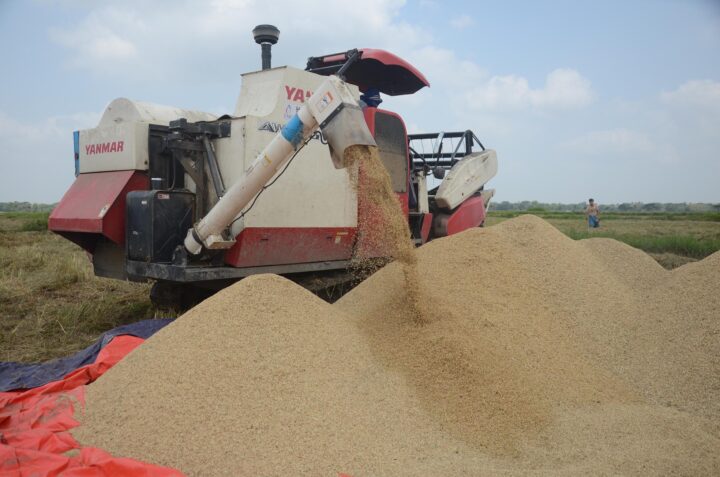21 Nov
The price of paddy has risen by around K600,000 per 100 baskets (one basket is equivalent to 46 pounds) because of less stock of monsoon paddy, said U Than Oo, the secretary of Bayintnaung Commodity Depot.
In September, the monsoon paddy was damaged by unexpected heavy rainfall in the monsoon paddy harvesting season and the paddy price at the rice mill is ranging from K440,000-450,000 per 100 baskets. In November, the paddy price increased to K600,000 per 100 baskets because there is no rain and less yield of high-quality paddy.
“The paddy in the regions is almost depleted in the second week of November. Most of the regional rice traders are saying that. During this paddy harvesting season, the paddy plantations were destroyed by the heavy rains. So, the traders do not stockpile the paddy in their warehouses because the paddy was wet and of lower quality. The traders are sending all the paddy stock to the Yangon region. Now, their warehouses are empty, and they are planning to collect the paddy to store in the warehouse, But the price of paddy has risen to K600,000,” said U Than Oo.
Now, the prevailing price of paddy is higher than the basic price of 100 baskets set by the government.
Under the provision of the Law of Protection of the Farmer Right and Enhancement of their Benefits, the Leading Committee for Farmers Rights, Protection and Interests Promotion has fixed the minimum price of paddy at K520,000 per 100 baskets (one basket is equivalent to 46 pounds) if the paddy meets the prescribed criteria — 14-per-cent moisture content and a fixed percentage of impurities such as sand, weed, and small stones — to create fair markets for farmers, who grow monsoon paddy and summer paddy in 2020-2021 financial year.
Besides, the 25-mark rice, which entered the market in the first week of November, got a better price than October and is sold for K20,500-K 21,000 per bag (one bag contains 108 pounds), he added.
“This month, we have made a profit of K1,000 per bag compared to last month. The rice is also so dry and sells well in the market,” said U Than Oo.
Moreover, China is likely to grant import of rice up to 2 million bags by 2021 in consideration of growing domestic demand, said Vice-Chair U Min Thein of Muse Rice Wholesale Centre.
Typhoon hit three provinces of China this year, resulting in damaging the paddy and maize fields severely. Likewise, Viet Nam, which China buys rice from, has also been affected by typhoon with their paddy fields badly damaged. Although China issued a permit for import of 500,000 rice bags from Myanmar in 2020, China is likely to grant the import of 2 million rice bags in 2021, he added.
In the 2019-2020 financial year, China granted a rice import quota of only 500,000 bags for Myanmar. In 2021, China will grant 2 million rice bags quota for Myanmar,” he added.
Moreover, the Chinese government is implementing the legal trading system and has allowed making of registration for granted rice export licences to 43 Myanmar rice companies and 79 rice mills in July. Earlier, the Chinese government issued permits to only 11 rice companies from Myanmar.
“Myanmar exported over 2.5 million tonnes of rice and broken rice in 2019-2020FY, earning US$794.388 million. So, Myanmar exported more tonnes of rice than the set target of 2.4 million tonnes of rice in the last FY. Myanmar will target to export 4 million tonnes of rice in the 2020-2021 budget year,” said Vice-Chair U Aung Than Oo of the Myanmar Rice Federation (MRF).
By Nyein Nyein (Translated by Hay Mar)



